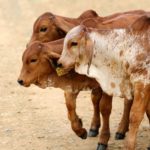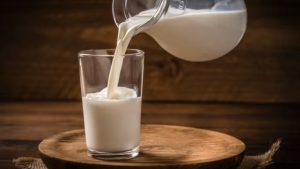
In fact, the National Dairy Development Board (NDDB) has estimated that the demand for milk as well as milk products in India is going to reach 266.5 million metric tonnes by 2030.
As per the 2030 projections, the rural sector with have 57 per cent share in the total consumption. However, the consumption on a per capita basis will remain higher in urban areas at 592 ml, compared to 404 ml in rural areas. In terms of state-wise production, a substantial proportion continues to be contributed by Uttar Pradesh, Madhya Pradesh, Andhra Pradesh, Rajasthan, Gujarat and Punjab.
Unorganised Nature of Dairy Farming in India
Indian dairy farming continues to be highly unorganised in nature even when business environment across the country is improving. As a result, around 60 per cent of the surplus milk comes within the unorganised sector, while the rest 40 per cent is often procured by organised sector entities such as dairy co-operatives, private companies etc.
This unorganised nature of the dairy farming industry has resulted in minimal penetration of technological progress within the sector. This has further led to consistently high wastage as well as lack of standardisation in terms of quality and quantity. In fact, 3 per cent or close to 5 million tonnes of milk often gets wasted, often resulting from lack of electricity.
India’s ambition to produce roughly 300 million tonnes of milk by 2024 may be hampered by high wastage and growing demand for dairy products. Furthermore, the average milk yield of cows in India is lower than that of some of their counterparts. To accomplish the aim, Indian dairy producers must boost production while focusing on minimising waste.
Indian Start-ups Providing Digital Solutions
Digitalisation can have a significant impact on the value chain’s ‘Milk Production’ component. Dairy farming in India is unorganised, and therefore, technology penetration is low, but nonetheless, a few start-ups have popped up in this field in the previous five years. These businesses strive to boost agricultural production while reducing waste.
One of the primary areas where digitization can have a substantial influence is cattle management. Farmers can watch cow feeding patterns and check their health using the Internet of Things (IoT) and advanced analytics. Cattle productivity and milk yield are projected to improve as a result of this. However, in India, livestock monitoring utilizing Artificial Intelligence (AI)-based systems are still in its infancy, with only a few companies providing this service.
Prompt Equipments is one such organisation that provides livestock management solutions. The firm teamed up with the Indian Institute of Technology (IIT) in Mumbai to design the ‘BovSmart’ wearable belt. The belt uses AI and IoT for tracking livestock breeding and deliver timely information to farmers. Another business, Stellapps Technologies (Stellapps), offers a similar solution, which uses a wearable gadget for cattle and a mobile application to deliver recommendations to improve herd performance. According to Stellapps, using this approach, milk yield can be raised by 20% and calf health costs can be decreased by up to 50 per cent. The Stellapps technology is currently being used to track around 4.5 lakh livestock.
In addition to livestock management, some other possible areas of dairy digitisation include the supply network and farmer payments. Due to its reliance on many elements such as ambient temperature, presence of cold chains, and limited shelf life, India’s dairy industry’s supply chain is highly complex. Its fragmentation further adds to the complexity. Digitalisation solutions such as IoT along with advanced analytics can assist by communicating real-time data to various stakeholders, detecting any abnormalities in milk’s quality and quantity even during value chain’s transit phases.
Improved decision is another possible benefit of digitalising dairy supply chain. Order monitoring, stock management, transactions tracking, and growth in sales may all be automated with real-time database and advanced analytics, allowing for better knowledge of clients’ purchasing habits. Stellapps, Mr. MilkMan, as well as Trinetra Wireless are three Indian start-ups among several others that are digitalising the dairy supply chain.
Dairy farmers’ cooperatives and unions have also started focusing on introducing online payments to farmers instead of relying on cash payments. Given that smaller dairy farmers control a big portion of the business in India, the advent of digital payments comes with its own set of obstacles. The most prominent amongst these is the fact that most small dairy farmers do not own a bank account. Co-operatives like the Gujarat Co-operative Milk Marketing Federation (GCMMF), popularly also referred to as ‘Amul,’ are, however, supporting them in opening bank accounts and transferring money to them promptly. Fino Payments Bank has also partnered with Gokul Dairy as well as Mother Dairy, since 2017, to digitalise payments in the dairy industry.
Alongside depositing money into farmer bank accounts, when it comes to digitising payments, given that smaller dairy farmers control the majority of the Indian dairy business, there is an urgent need to also develop methods to supply farmers with low-cost finance and insurance solutions.
Conclusion
The government has facilitated the dairy farming infrastructure through its initiatives such as the development of the National Dairy Plan, a sustainable development-focused framework for the sector, along with general empowerment schemes such as the Jan Dhan Yojana and the Startup India initiative . However, as India’s dairy industry is largely unorganised, its future depends predominantly on the assistance of small dairy producers. The sector has been sluggish to adopt new technologies and digitization, resulting in lesser production. Nevertheless, with start-ups entering the industry and addressing gaps in livestock management and supply chain, the situation is beginning to change, ushering in a new era of growth for the industry, rooted in digitalisation.
















